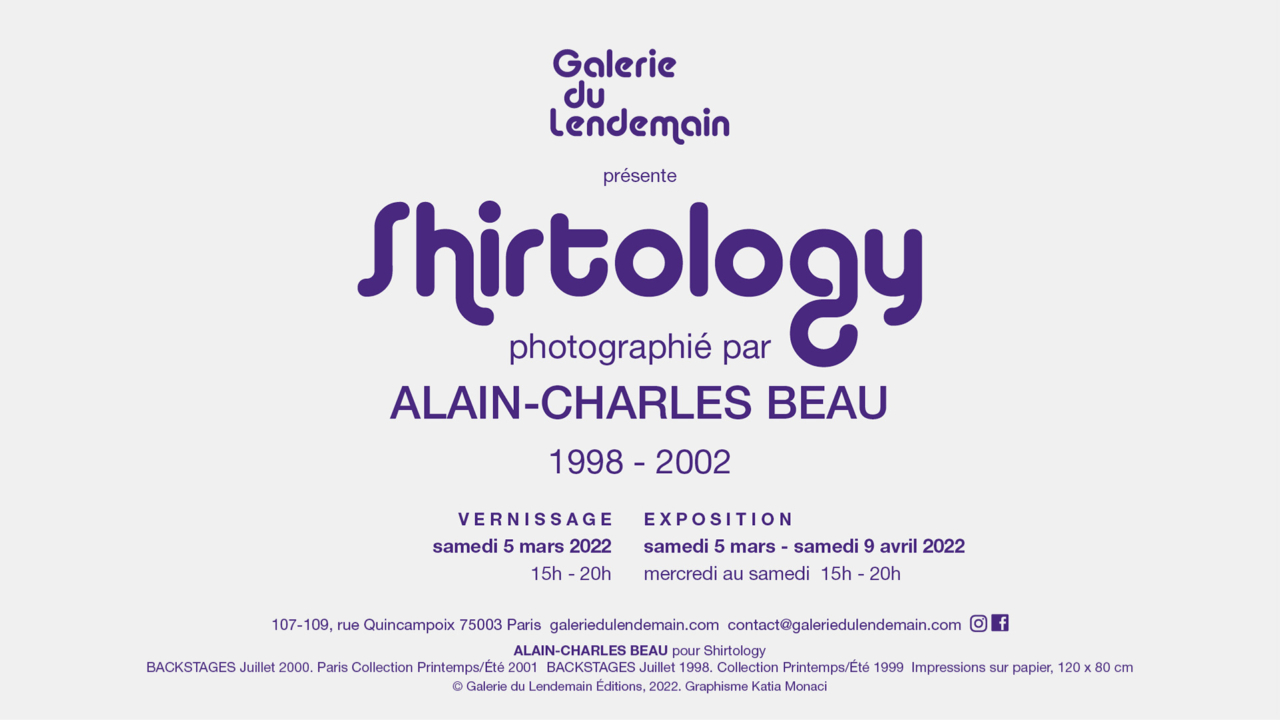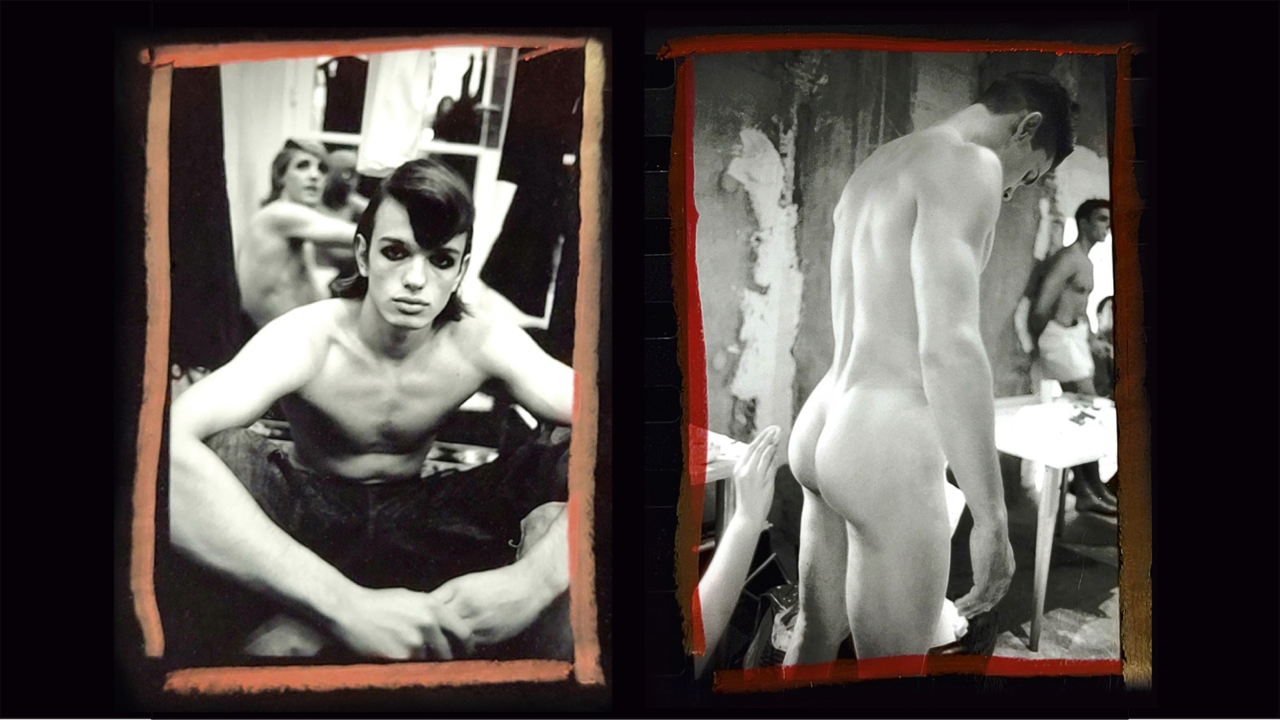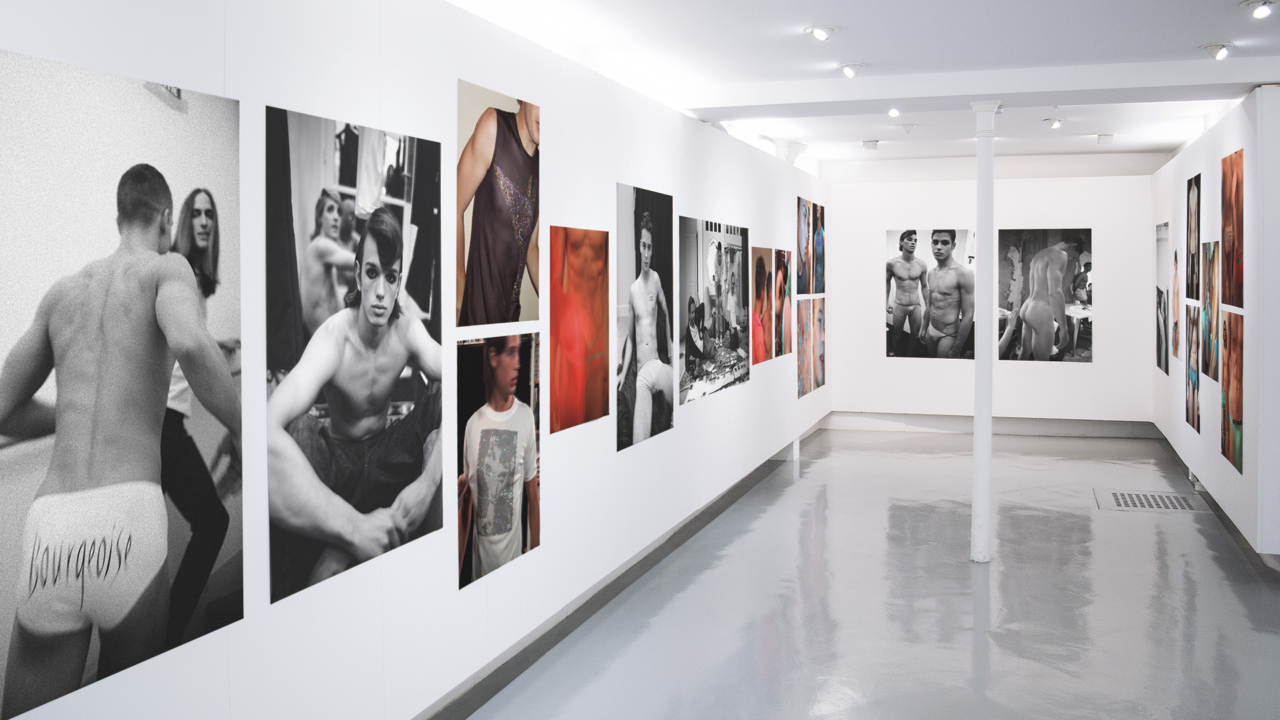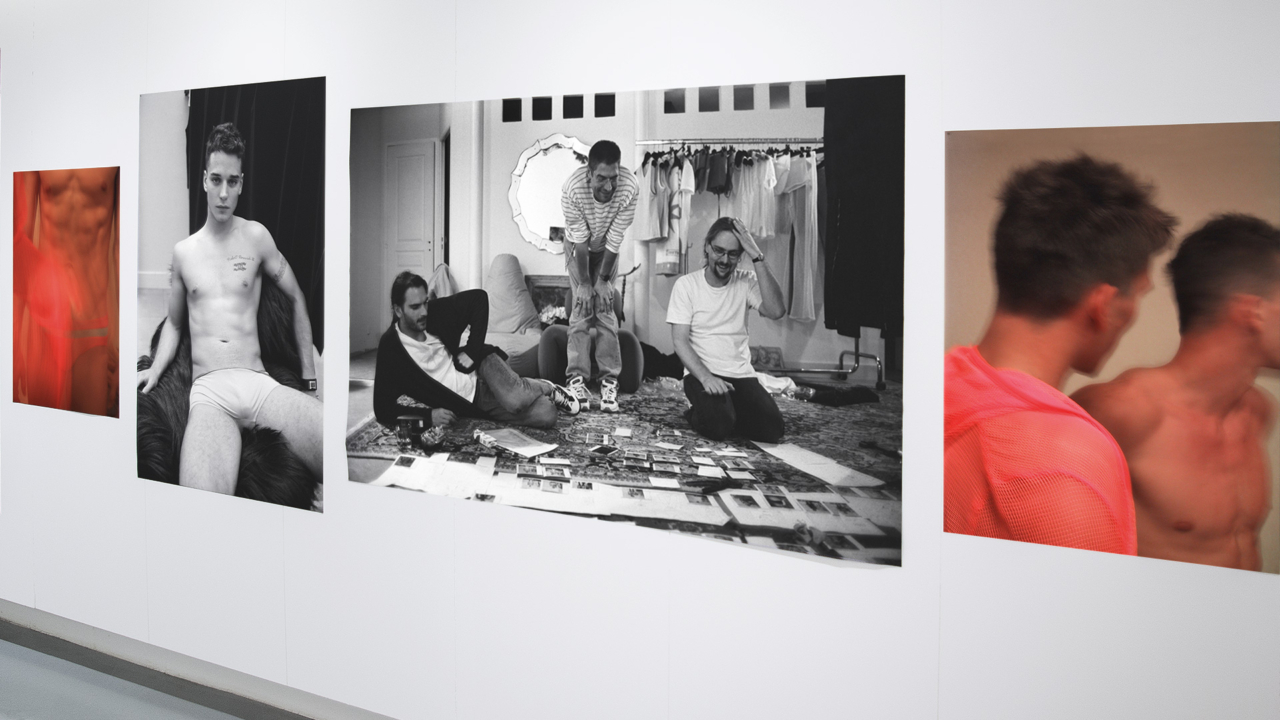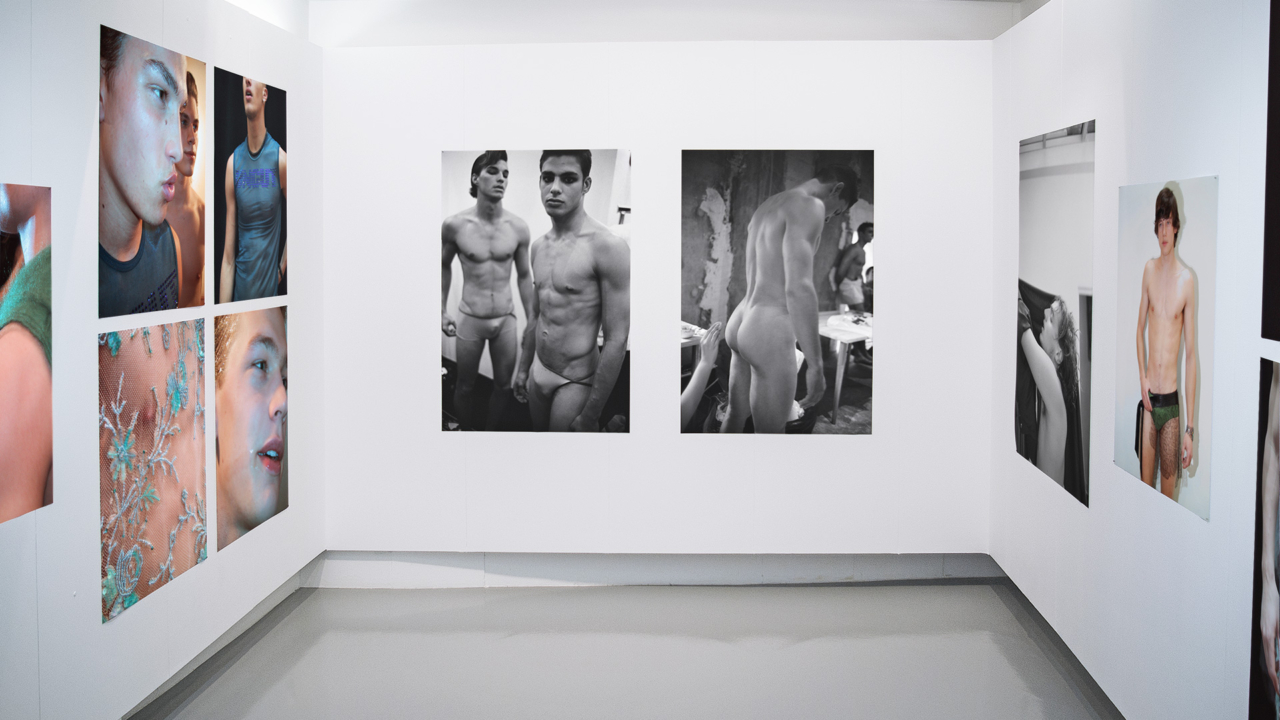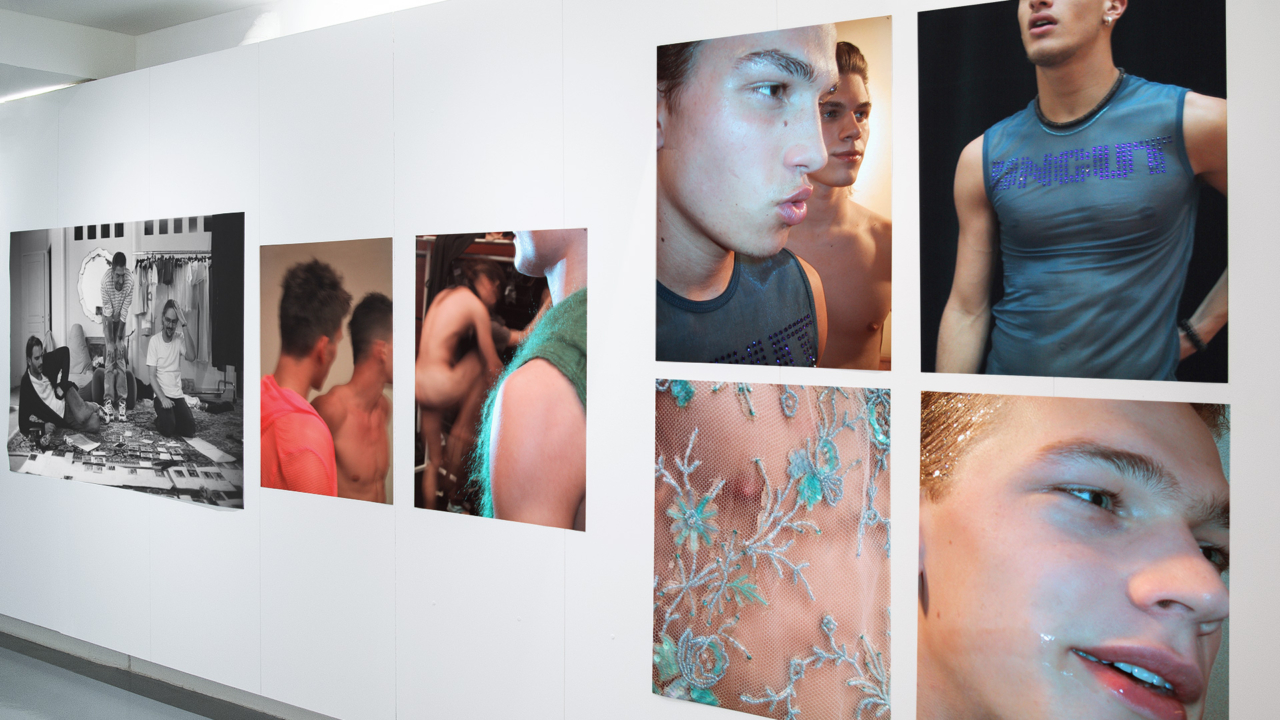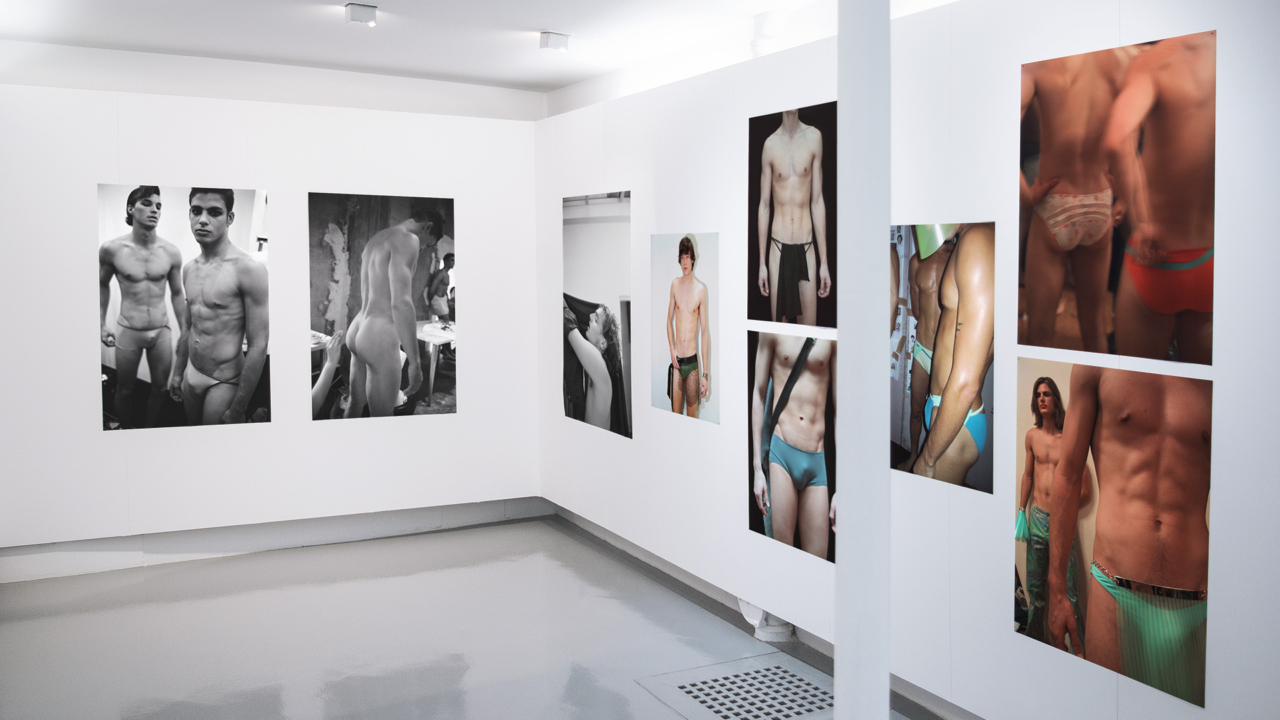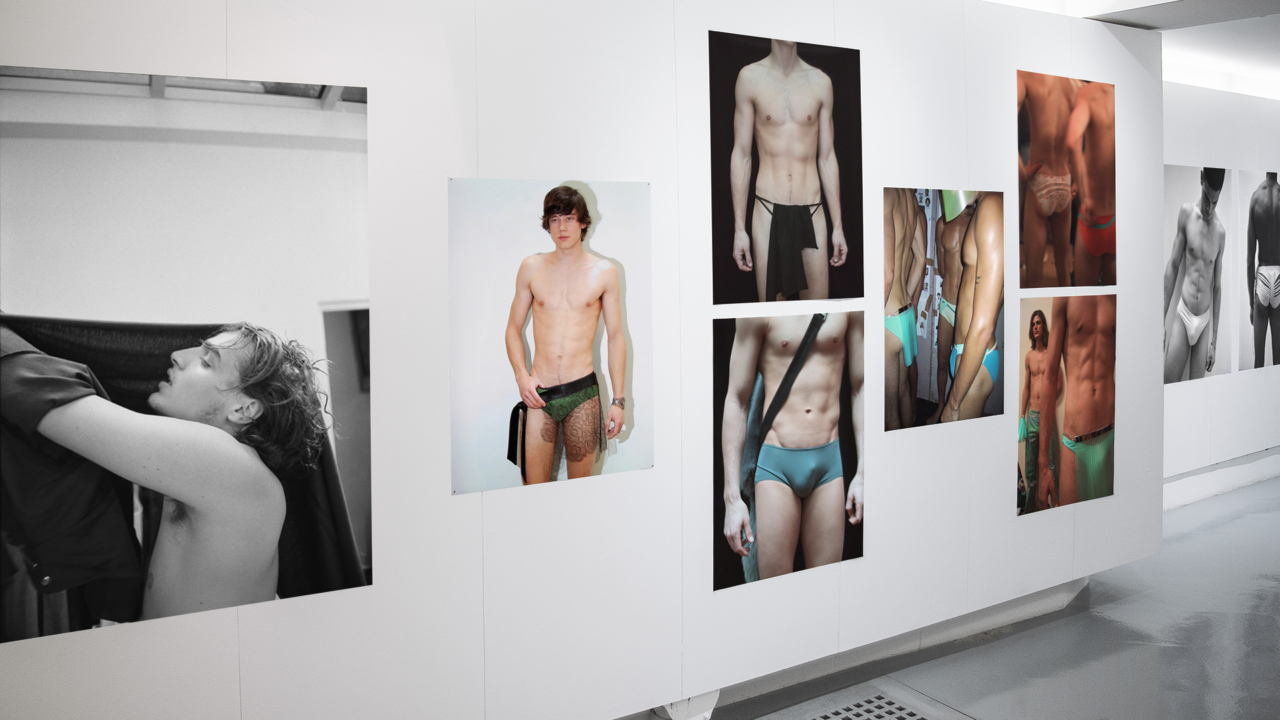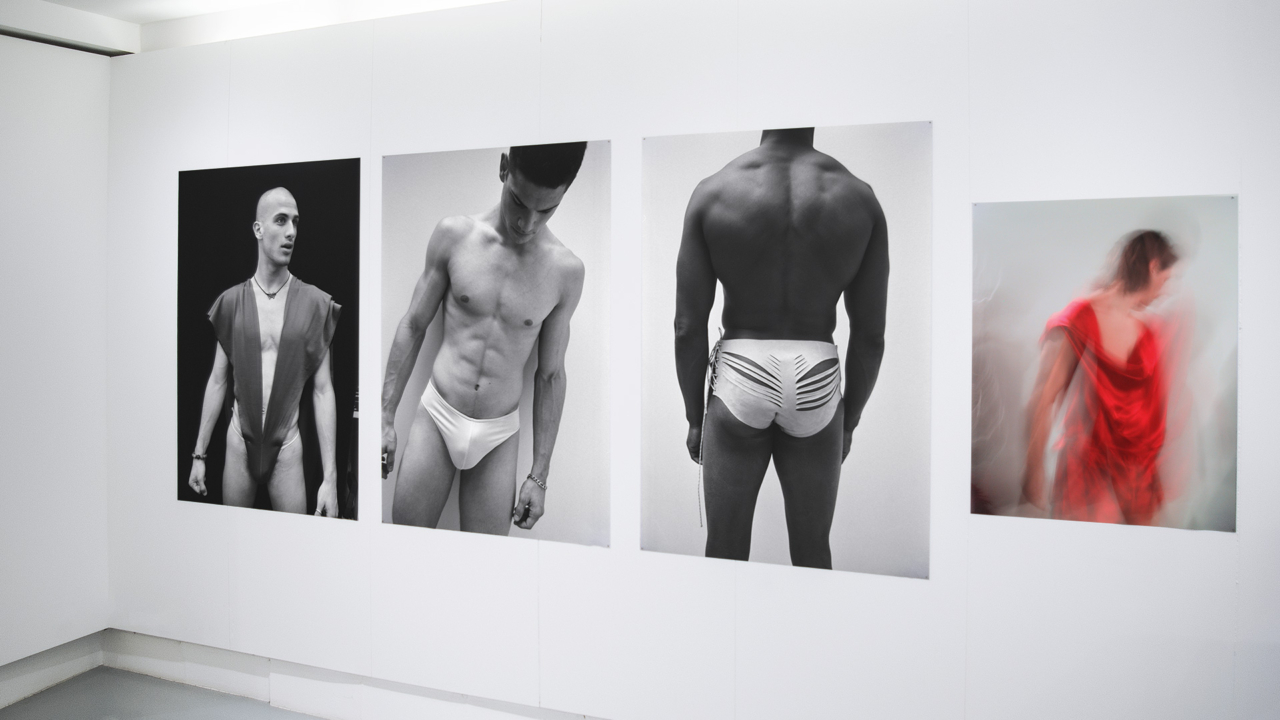SHIRTOLOGY 1998 – 2002
ALAIN-CHARLES BEAU
photographs
March 5 – April 9, 2022
On January 21, 1973, the first occurrence of “porno chic” appeared in the pen of journalist Ralph Blumenthal on the occasion of the theatrical release of Deep Throat, one of the first large-scale pornographic feature films. Long remained in the shadows despite an equally impressive success, the history of underground cinema will retain less of its homosexual counterpart entitled Boys in the sand. Directed by Wakefield Poole in 1971, it shows a torrid and sunny utopia turned on the gay paradise of Fire Island which will finally make it possible to explore with creativity the homoerotic fantasy.
Twenty-five years later and on the other side of the Atlantic on a beach in Lisbon, Jacky Rzenno and Marc Schils imagine a line of swimsuits and T-shirts that will inspire the name of the brand they learn to create: SHIRTOLOGY. The first Paris fashion show in January 97 called “Porno is not dead” sets the tone and registers the brand in a growing trend. In particular John Galliano at Dior and Tom Ford at Gucci, the support of influential critics like Carine Roitfled who would become “the high priestess”, “porno chic” spread like wildfire and ignited podiums, magazines, billboards and advertising spots. In the libertarian and hedonistic spirit of Boys in the sand passed through the supercharged grinder of the 90’s, the two creators develop an uncompromising sex-positive aesthetic that always reveals more skin while summoning more experimental references such as Sayat Nova by Sergei Parajdanov. Often very tight, covered with rhinestones or sublimated with noble materials such as silk or lace, Shirtology creations emphasize as much as they break the codes of virility.
Immortalized behind the scenes by photographer Alain-Charles Beau, the models reminiscent of the bodybuilt bodies of Bob Mizer’s images or the androgynous bodies of those of James Bidgood, follow provocative parades in barely covering swim briefs. Discreet, the photographer observes with patience and attention the often-prude gestures of a contradictory era. The exhibition presents a corpus of analog photographs in black and white as well as digital in color whose materiality testifies to the technological shift at work in the light of the change of millennium.
Victim of its own excesses, but also instigator of a whole culture that is now ubiquitous, the “porno chic” trend never really goes away. To present these archives is therefore to return to the essence of a culture, to the particularities of an era, and to try to understand their mechanisms with the distance they require.

